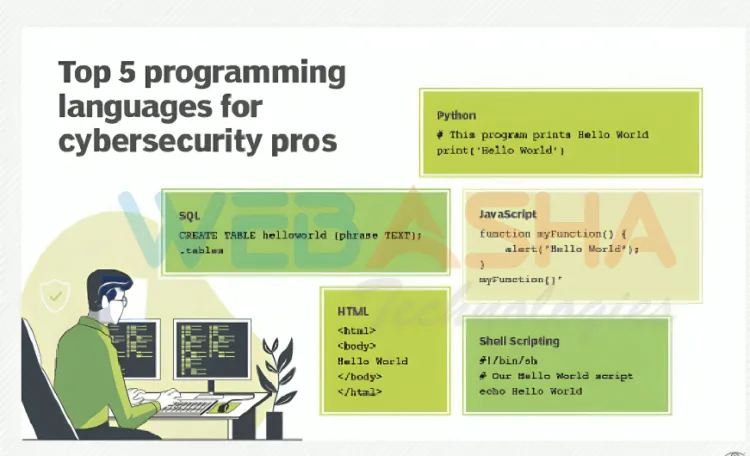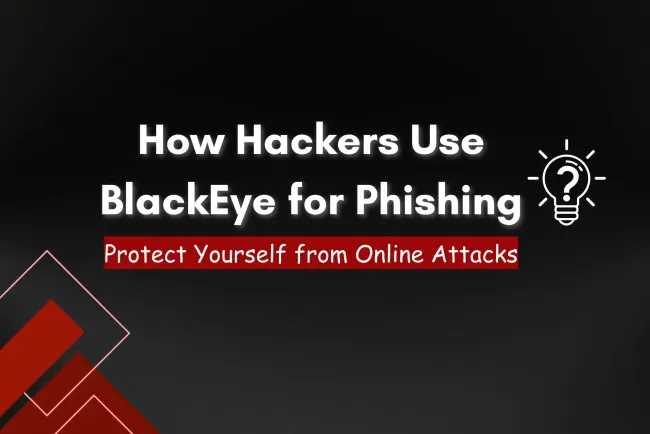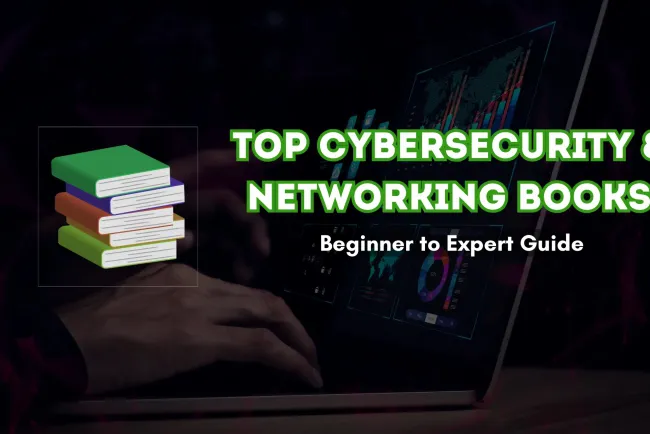In today's world, cybersecurity has become a paramount concern for individuals, organizations, and governments alike. As cyber threats continue to evolve, the demand for skilled cybersecurity professionals has skyrocketed. Whether you're looking to start a career in cybersecurity or enhance your existing skills, understanding programming languages, tools, and the learning path is crucial for success.
In this blog post, we'll explore the programming languages essential for cybersecurity, discuss whether you can teach yourself cybersecurity, and delve into the tools you'll need to get started in this exciting field.
1. Programming Languages Used for Cybersecurity

Understanding how to code is an important skill in cybersecurity. Although not every cybersecurity role requires deep programming knowledge, learning to code will certainly give you an edge and open doors to higher-level job opportunities. Here are the key programming languages used in the cybersecurity industry:
C and C++
C and C++ are foundational programming languages used in the development of operating systems like Linux, macOS, and Microsoft Windows. They provide access to low-level IT infrastructure, such as RAM and system processes, which can be exploited by hackers if not properly protected. Knowledge of these languages allows cybersecurity professionals to understand vulnerabilities at the system level and design more secure systems.
Python
Python is one of the most popular and versatile programming languages in cybersecurity. It's known for its simplicity and power, making it an ideal language for both beginners and advanced professionals. Python is frequently used for developing analysis tools, penetration testing scripts, automating tasks, and designing secure programs. Cybersecurity experts often use Python to create hacking scripts to identify vulnerabilities in systems or networks.
JavaScript
Primarily used to design interactive web pages and applications, JavaScript is a critical language for cybersecurity professionals. Because it’s widely used for web development, JavaScript is a target for malicious actors seeking to exploit web-based vulnerabilities. Understanding JavaScript helps cybersecurity professionals to assess and protect web applications, preventing attacks like cross-site scripting (XSS).
PHP
PHP is a server-side scripting language used to develop dynamic websites. Since most websites today are built using PHP, learning this language is essential for cybersecurity professionals focused on website protection. PHP-based websites are often targets for cyber-attacks like SQL injection or cross-site scripting, making PHP knowledge crucial for defending against such vulnerabilities.
SQL
Structured Query Language (SQL) is used to design, manage, and query databases. SQL injections are one of the most common types of cyber-attacks, where hackers manipulate SQL queries to steal or modify data. Learning SQL is critical for understanding how databases work and how to protect them from malicious SQL injection attacks.
| Programming Language |
Purpose in Cybersecurity |
Key Use Cases |
| C and C++ |
Low-level access to system processes |
OS development, system-level vulnerabilities |
| Python |
Easy-to-learn scripting language |
Penetration testing, automation, vulnerability analysis |
| JavaScript |
Web development and interactivity |
Identifying web vulnerabilities, defending against XSS |
| PHP |
Server-side scripting for websites |
Protecting websites from attacks like SQL injection |
| SQL |
Database management and queries |
Preventing SQL injection, securing databases |
2. Can I Teach Myself Cybersecurity?
The short answer is yes! Many cybersecurity professionals are self-taught or have learned through training programs and certifications. While a formal degree in cybersecurity, programming, or information systems may be helpful for some roles, it is not strictly necessary. Cybersecurity is a broad field, and many positions don't require advanced coding skills, but understanding the fundamentals of information technology systems and networks is vital.
How to Get Started:
- Learn the Basics: Start by learning the fundamentals of networking, operating systems, and common cyber threats like malware, phishing, and ransomware.
- Hands-on Practice: Get practical experience by setting up your own home lab or using online platforms to practice real-world cybersecurity scenarios.
- Learn Coding: While coding isn't required for every role, understanding basic programming concepts will help you identify vulnerabilities in systems.
- Get Certified: Certifications are an excellent way to demonstrate your skills and knowledge. Popular certifications include:
- Certified Information Systems Security Professional (CISSP)
- CompTIA Security+
- Certified Ethical Hacker (CEH)
3. Do I Need to Know Coding for Cybersecurity?
The necessity of coding depends on the role you're pursuing. For many entry-level positions, such as a cybersecurity analyst, coding may not be required. These positions typically involve monitoring systems, identifying vulnerabilities, and managing security policies. However, as you advance in your career, coding becomes increasingly important, especially if you're moving into roles like penetration testing, threat hunting, or developing security tools.
Understanding coding languages such as Python or C++ can help you automate tasks, write scripts for penetration testing, or even identify vulnerabilities within software.
4. How Long Does It Take to Learn Cybersecurity?
The timeline to learning cybersecurity can vary depending on your prior knowledge and the path you take. On average, you can grasp the basics of cybersecurity in as little as 12 weeks, but becoming proficient takes time and hands-on experience.
For those pursuing formal education, an associate’s degree in cybersecurity typically takes two years, while a bachelor’s degree will take around four years. However, cybersecurity doesn't always require a degree—many professionals gain their skills through certifications and self-study.
Popular Cybersecurity Certifications:
| Certification |
Focus Area |
Average Duration to Complete |
| CISSP |
Advanced security practices |
1-2 years (study time) |
| CompTIA Security+ |
Entry-level security concepts |
3-6 months |
| CISM |
Security management and governance |
6 months - 1 year |
| CEH |
Hacking techniques and penetration testing |
3-6 months |
For those who want to fast-track their learning, cybersecurity certifications are an excellent choice. These certifications help demonstrate your knowledge in specific areas and can significantly boost your career prospects.
5. Tools Needed to Learn Cybersecurity
Learning cybersecurity involves a combination of theoretical knowledge and hands-on practice. Below are some essential tools that will help you gain practical experience:
- Virtualization Software (e.g., VMware, VirtualBox): These tools allow you to set up virtual machines to simulate real-world environments for penetration testing and network analysis.
- Kali Linux: A Linux distribution specifically designed for penetration testing and ethical hacking.
- Wireshark: A network protocol analyzer used to capture and inspect network traffic.
- Metasploit: A tool used for developing and executing exploit code against remote target machines.
- Burp Suite: A popular tool for web application security testing, often used for penetration testing.
- Nmap: A network scanning tool used to discover devices and services on a network, often used for reconnaissance.
Conclusion
Cybersecurity is a dynamic and rewarding field with immense potential for career growth. While coding may not be mandatory for all roles, it is a valuable skill that can greatly enhance your ability to identify vulnerabilities, automate tasks, and build secure systems. With the right programming knowledge, certifications, and tools, you can pave the way for a successful career in cybersecurity.
Whether you choose to learn on your own, through formal education, or a combination of both, the key to success in cybersecurity is a commitment to continuous learning and hands-on practice. Stay updated on the latest security trends, and you'll be well on your way to making a meaningful impact in the cybersecurity landscape.
FAQ:
1. What is cybersecurity?
Cybersecurity is the practice of protecting computer systems, networks, and data from unauthorized access, attacks, or damage. It includes strategies, technologies, and practices to secure digital information.
2. Do I need a degree to start a career in cybersecurity?
No, a degree is not mandatory. Many professionals enter the field through certifications, self-study, and hands-on experience. However, formal education can be beneficial for certain roles.
3. Which programming languages should I learn for cybersecurity?
Key languages include Python, C, C++, JavaScript, PHP, and SQL. Each serves a specific purpose, such as penetration testing, system vulnerability analysis, and database security.
4. How long does it take to learn cybersecurity?
You can learn the basics in about 12 weeks, but becoming proficient can take 2–4 years, depending on your education, certifications, and practical experience.
5. Is coding essential for all cybersecurity jobs?
No, coding is not necessary for entry-level jobs. However, advanced roles like penetration testing or developing security tools often require programming knowledge.
6. Can I teach myself cybersecurity?
Yes, many professionals are self-taught. You can start with online resources, training programs, and certifications to build your skills.
7. What certifications are best for beginners?
Certifications like CompTIA Security+, Certified Ethical Hacker (CEH), and Cisco CyberOps Associate are great starting points for beginners.
8. What tools should I use to practice cybersecurity?
Key tools include VirtualBox, VMware, Kali Linux, Wireshark, Metasploit, Burp Suite, and Nmap. These tools allow hands-on practice in ethical hacking, penetration testing, and network analysis.
9. What career paths are available in cybersecurity?
Career options include cybersecurity analyst, ethical hacker, penetration tester, incident responder, security consultant, and risk manager.
10. How do I stay updated in the field of cybersecurity?
Follow cybersecurity blogs, forums, and news sites. Regularly update your skills with certifications and participate in hacking challenges or Capture the Flag (CTF) events.













![Top 10 Ethical Hackers in the World [2025]](https://www.webasha.com/blog/uploads/images/202408/image_100x75_66c2f983c207b.webp)



![[2025] Top 100+ VAPT Interview Questions and Answers](https://www.webasha.com/blog/uploads/images/image_100x75_6512b1e4b64f7.jpg)







